


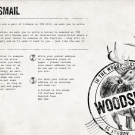








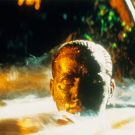
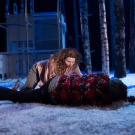










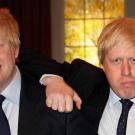











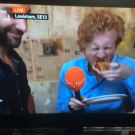


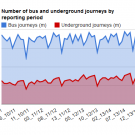


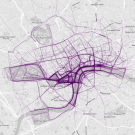
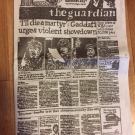
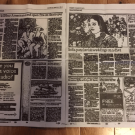
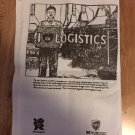



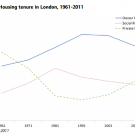
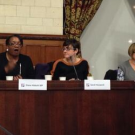








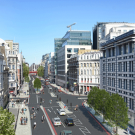


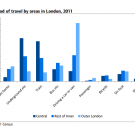
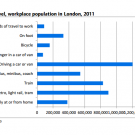
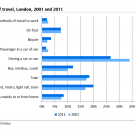




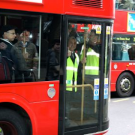



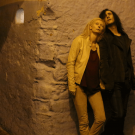


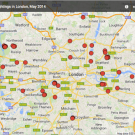

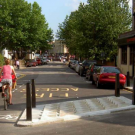

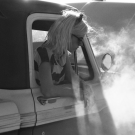

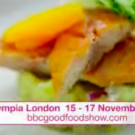
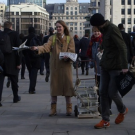
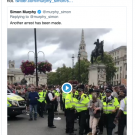















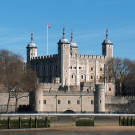


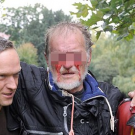











It's not the 100% bike hire fare rises, it's the 4.2% tube and bus rises that really matter
Adam has a post up at The Guardian reacting to yesterday’s transport fare increases. He compares the news with what Mayor Johnson said he would do during the election campaign earlier this year:
“[Johnson] promised Londoners that he would “bear down on fares” this year. He went on to insist that they would “go down in an honest and sustainable way” if he was re-elected.”
TfL fares are going up by an average of 4.2%, while cycle hire charges are going up 100% – to £2 a day for access, and £90 a year for membership.
The 100% cycle hire rise might sound like the bigger deal, but it is not.
For a start there are about 1m cycle hire journeys a month.
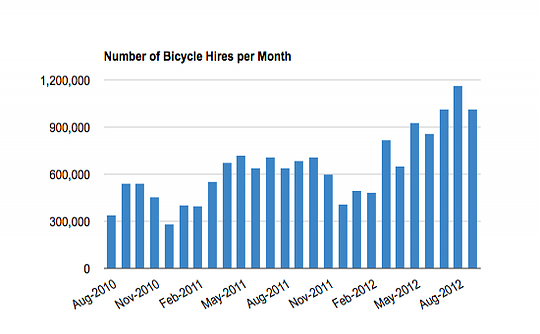
But there are about 300m bus and tube journeys.
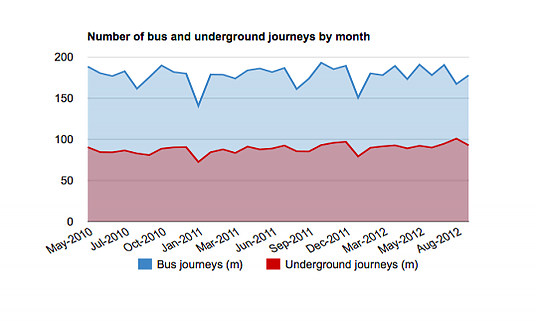
A (PDF) survey in September 2011 showed 39% of cycle hire users had a household income over £75k.
A (PDF) survey in 2008 showed bus users to be “broadly representative of Londoners in terms of income.”
We need to focus on that 4.2% increase in bus and tube fares. That’s what affects the overwhelming number of Londoners across the income scale.
Diamond Geezer has a good post up explaining the background
“The pay-as-you-go bus fare rises by 3.7% in January [to £1.40]. That’s a whopping 56% rise since Boris came to power.”
He predicts that more rises in future are inevitable if we are to properly fund the transport network.
“If London’s to have a better transport network, then fares do have to rise. That’ll be cold comfort if your pay’s been frozen or your benefits cut, and maybe more could have been done to keep these increases down. But if we’re all to get around town in the future, the annual fare rise charade will go on.”
But here’s the sting in the tale. According to the Mayor’s announcement
“The revised changes to fares are expected to raise around £134m per year.”
Against which we must set this:
Based on the figures I can find Anthony Davis is overstating the case. But half a billion on those three projects may be about right.
New bus cost (£180m to buy 600 buses, £40m p.a. for extra conductors) here.
Cablecar cost (£60m construction, plus running costs, minus £36m in sponsorship over 10 years) here.
Bike hire scheme costs (c. £225m) here
Under the current Mayor, bus and tube passengers, a broadly representative cross section of Londoners, are year on year being handed above inflation fare rises which cause their living standards to drop. Why? Well in part to secure TfL’s investment plan, no doubt. But also in order to finance a cable car used by nobody, hire bikes used by the few, and overstaffed buses which many have yet to see at all.
Is this right?
07 Nov 2012



















































































































In-depth interview: Photographer Mike Tsang on the blessing and the curse of growing up a Chinese Londoner
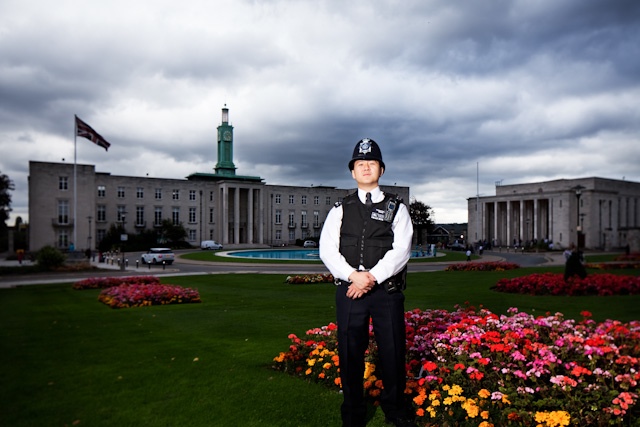
I asked Mike, who himself comes from Harrow and has Chinese heritage, what the project tells us about China, what global migration does to culture, and whether being caught in the middle is a blessing or a curse.
Snipe: Your exhibition is about China and Britain and the people in between. People like William Wong (pictured above), who describes his mother growing up in a family of subsistence farmers in a village in Hong Kong. He now lives in Enfield and is a PC in the Met Police. That’s a staggering change to have taken place over just one generation. Do you feel that it stretches cultural identities and traditions to breaking point? How do people deal with that sort of rupture?
Mike Tsang: It’s certainly a huge change to take place over one generation, and I think that’s one of the challenges that all first-generation communities have to face – how to communicate with their children who are “in between”. Growing up I sometimes felt the difference in culture between my friends at school and that of my parents. Both of my parents had quite an impoverished upbringing as my father was from a family of 13 children and my mother from one of ten. So most arguments would come from their perspective of me taking our relative prosperity for granted, and me not understanding why I couldn’t have more personal freedom.
I don’t think it stretches identities to breaking point, but it can definitely cause tension unless you’re actively aware of it – Stephen Hoo in his interview spoke of a conscious decision he made as a teenager to find out more about both his Chinese and British sides. As I grew older, I think my parents and I have tried to understand each others’ viewpoints better which has brought us closer together.
Snipe: You also spoke to Don Mei (pictured below), who remembers as a child in bed late at night hearing his father downstairs desperately practising his English – striving to integrate himself to his new home. Immigrating to the UK at that time was a great struggle as well great opportunity. Is that experience, that struggle, something that the first or second generation of British Chinese can relate to?
Mike Tsang: I think all can relate to that struggle, but it’s important to remember that the Chinese diaspora is varied and so experiences will be too. For example my parents learnt English at school in Mauritius before it was independent from British rule, so acclimatisation in terms of learning the language was easier for them. Emotionally though, I think the struggle is more universal. My father remembers crying when he left home when he was 20yrs old to go to the UK – he knew he wouldn’t see his family for a long time after that as there wasn’t the kind of affordable air travel that exists now. He didn’t return for over ten years, so he must have felt quite isolated for some time starting out in the UK.
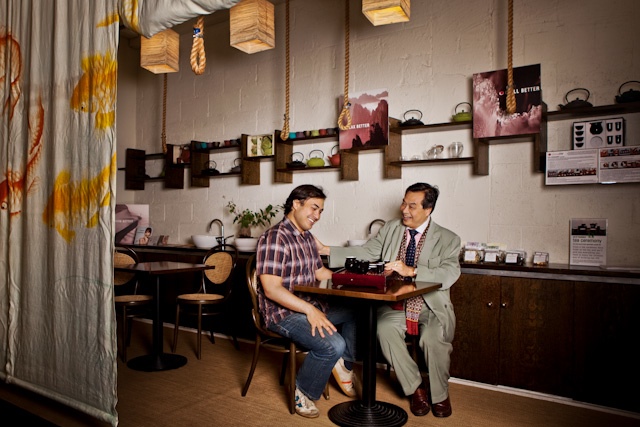
Snipe: China is a country that a lot of Westerners don’t really know what to do with – it’s a place that seems very big but also very far away. Can you talk about how you think China is perceived here and how the lives and experiences of your subjects feed in to that.
Mike Tsang: A tricky question! I think the popular stereotypes about the Chinese are well-known – we all practise kung fu, eat with chopsticks and perform Chinese opera. We might even have a relative here illegally selling DVDs! In all seriousness though, I think China is still very much seen as the exotic ‘Other’ for a lot of British people. Some interview subjects said they feel less accepted as a ‘British’ person than say, a person of Black or Indian origin. I hope that this exhibition can share the stories of these British Chinese and people reading about this project can learn more about their rich heritage and see how that is part of Britain today.
Snipe: How specific is the story of Chinese immigration? Can we compare these stories to West Indian immigrants from the same period, to Eastern European immigrants today? Do you think there’s a universal narrative of immigration?
Mike Tsang: I definitely feel like there are themes in this project which are similar to other migrant communities. I grew up in Harrow in Greater London, which has one of the highest population of Indian, Pakistani and Sri Lankan origin in the UK. Many of my friends’ families had emigrated from there. We felt a common bond from the experience of being the children of parents who had moved here, and even now we’re all very close. I would love to do a follow-up project with a different group of peoples and see how true that idea is!
Snipe: Your subjects are of two cultures, or more than two in some cases. Yet at the same time, they have had to confront the idea that they are neither “properly Chinese” nor “properly British.” Several of them say that their inability to speak Chinese made it hard for them to feel fully Chinese, while the fact that they were not white made it hard to feel fully British. Are these attitudes changing? Has the richness of their heritage ultimately been a blessing, a curse, or something else?
Mike Tsang: From my own childhood I thought it was a curse whilst growing up but now I see it as a blessing. As a child I wanted to fit in but physically I looked different. I think with maturity, and living in a international city, you start to appreciate the advantages of being able to relate to more than one culture. The positive responses we’ve had to the project from people outside of the British Chinese sphere illustrates that: people are fascinated with the richness of the subjects’ heritage as they make for great stories.
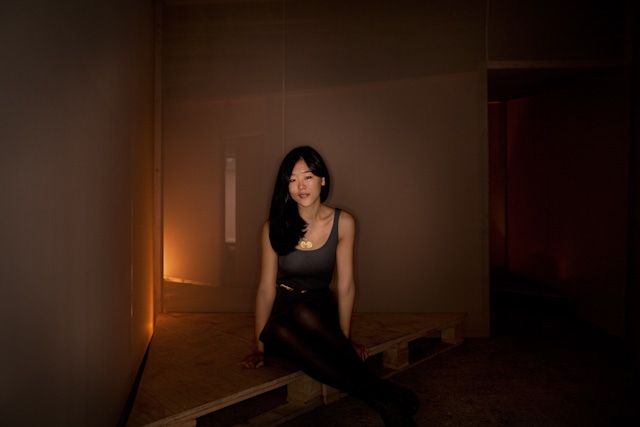
Artist Zoe Chan, whose grandfather worked in China as a carrier of precious metals
Snipe: Finally, you’re a photographer and your exhibition includes photography. But there’s also oral history, archive imagery, a website with audio recordings…does this sort of holistic, multi-media approach suggests ways that photographers and artists might present their work in the future? Is the time passing when you could tell these sort of stories with photography alone?
Mike Tsang: There will always be a place for great photography but I think with the saturation of digital imagery that the public are exposed to, it is much more difficult to catch someone’s attention with just one image. The ‘holistic’ approach to this project comes from wanting to make the subject interesting and accessible to people. I’ve seen a lot of great heritage projects that have very valuable content but through a lack of visuals, audio etc do not reach out to people, which is a shame. It also stems from my own interest – I like stories first and foremost, and I think you can get a much more immersive experience if you can read and hear the people as well as see them in photographs. As a photographer, I hope to do more work like this in the future, at the intersection of arts and heritage.
See other in-depth London interviews:
Iain Sinclair and Andrew Kötting on their Olympic pedalo film Swandown
Kate Flowers of CoOperaCo on her mutualised operatic finishing school
Stratford filmmaker Winstan Whitter on what got lost in the gentrification of Dalston
01 Nov 2012



















































































































More food, less booze: the changing face of the West End
“…between 2005 and 2009 there was a rise of 14 per cent in the number of restaurants, a reduction of 5.7 per cent in the number of bars, café bars and pubs, and a 16 per cent reduction in the number of nightclubs. There was also evidence of a reverse in the area’s trend of increasing crime, disorder and public nuisance.”
This was a deliberate policy by Westminster council to favour restaurants over bars in planning decisions.
So, people who’ve been eating and drinking and carousing around town for some time, I ask you this: has the character of the West End at night changed from the boozy times of yore?
From the report by GLA Economics (PDF) – Alcohol consumption in the night-time economy
30 Oct 2012



















































































































Imperial's online tree of life: a good resource for anyone into the imponderable immensity of existence
This video introduces this new website frome the biology bods of Imperial. It’s a clickable, zoomable, generally mess-aroundable tree of life.
When you start scrolling through the branches, zooming effortlessly through the vast generations of beings of the world, you feel a great sense of power. Your web browser has become a window looking out upon a vast panorama of life.
Then you realise that this sense of power is an illusion. In the context of this great tree, your life, and the life of your web browser, is of nothing. You are as lowly as a louse who’s just fallen out of a fuck off big oak tree. You are nothing.
So think on.
25 Oct 2012
Has the endangered elephant sculpture of Victoria trumpteted its last?
Barry Baldwin’s sculptures of endangered animals at Allington House in Victoria face a grim extinction. Historian, tour guide and blogger Peter Berthoud is on the case.
The building is due to go, and developers Land Securities intend to obliterate Baldwin’s triptych with it.
In it, animals burst forth from the stone for a final roar at all the commuters, the passers by, the tourists, the humans, the destroyers of their worlds.
Perhaps we should be heartened that the chosen species are going to outlive their own memorial. You might have got good odds on that when the work was commissioned in the 1980s.
But now it is uneconomic, the developers say, to save them.
Peter has not given up hope. He believes a new home for the creatures could be found, and concludes his post with a call to action:
“Please support the campaign to save them and spread the word via social media. Perhaps there is still time left to persuade Land Securities not to engage in their planned act of corporate vandalism.”
Read Peter Berthoud’s blog post for the full details.
The campaign’s Facebook page is here. And a petition to save the Allington house sculptures is here.
Image – The campaign’s Facebook account
See also:
English Heritage’s round up of London’s newest listed buildings
Is this tarmac-surrounded statue the most endangered Victorian architecture in London?
23 Oct 2012



















































































































Insight into the labourers waiting every day for work, outside Seven Sisters Wickes
Sorana Stanescu in the New Statesman has a fascinating long read about construction workers, many of them economic migrants from Eastern Europe, who gather each morning outside Wickes in Seven Sisters looking for work.
“The men gather in the shadow of the Wickes hardware store, looking out for the odd jobs that keep them in the UK and for the police that periodically moves them along…With no offices or agencies supporting them, the day labourers crowd the pavement and advertise their trade through their attire – grubby tracksuits spattered with paint and plaster. When potential clients pull up, they haggle over rates and hitch rides. When the police show up, they run…Most of the men outside Wickes said they expected to earn around £50 (€60) a day.”
If you live and work in London but weren’t born here (and I fall into that category), then you’re an economic migrant too. That’s something worth thinking about.
Sorana Stanescu at The New Statesman – Cheap, and far from free: The migrant army building Britain
18 Oct 2012
City Skills: The best places in London to pretend you're in a film
Sometimes you might find yourself wandering alone through this city, with only your imagination between you and the abyss. At such a time, pretending that you are in a film is a fine way of preventing your brain from tormenting you with recollections of your many personal failures, character flaws, and abandoned loves. Done subtly, no one need even know about the fantastic scenarios secretly playing out behind your miserable facial exterior. It’s an urban survival mechanism, and a useful skill to learn.
Here are some likely places to indulge in such fancies:
Place: Your local market
Film Genre: Romcom
Plot, thus: You’re alone and single, single and alone, on a sunny Sunday morning. With no lover to share the delights of the day, you head to the nearest food market to ease your despair. A lingering squeeze on an aubergine is the closest you’‘ll be getting to physical intimacy today. As your hand dallies on the luscious purple skin, the texture suddenly changes. You’re stroking the hand of a handsome stranger. They too like to come and absent-mindedly stroke the aubergine; it helps them get over a messy break up. You must be made for one another. But is that aubergine big enough for the both of you?
Humorous vegetable-based misunderstandings ensue.
Place: A windy tube escalator
Film Genre: Spy thriller
Plot, thus: The next train leaves in two minutes time. Miss it, and the whole town is gonna blow. You have the code in your pocket and some heavies on your tale. The wind whips your hair into a frenzy as manic as your heart. The clock ticks down. But just when you think you’ve made it, you see a gormless tourist standing before you on the escalator ON THE LEFT HAND SIDE…
Can you save the city before it’s too late?
Place: The British Library, British Museum, Tate, etc.
Film Genre: An elegaic arthouse short
Plot, thus: There’s a painting/historical object which no one truly understands but you. You like to visit the museum/gallery and sit in front of it for hours, contemplating its mystic power. One day, a handsome stranger sits next to you, and wordlessly contemplates the same piece. Nothing is said. The object’s power holds you both. The next day you return, as does the stranger. And the next day, and the next. Neither of you speaks, but through the object you connect. This is a love too pure for words. One day the stranger does not appear. They are gone for ever.
Only the object remains as a witness to your departed silent love. FIN.
Place: An independent bookshop
Film Genre: A winsome indie love story
Plot, thus: You go in looking for Ibsen. A handsome stranger is after some Proust. Your shared commitment to paying over-the-odds for books you could get cheaper on Amazon is rewarded with longing glances through the shelving and an immeasurable feeling of joint superiority. An irksomely protracted courtship unfolds in the bookshop’s basement room, in which smug literary references are mistaken for jokes. One day, just as you’re really falling for each other, the bookshop goes out of business. You only bought one book there between you, so it’s partly your fault.
So do you really love each other? Or was it just about the bookshop all along?
Place: You’re friend’s flat/house
Film Genre: Gross out comedy/Bromance/etc
Plot, thus: You and your mates sit around on the sofa all night watching TV, drinking beer/wine, making 90s references and moaning about the opposite sex. Everybody thinks it’s hilarious, so you don’t really need a plot at all. At the end of the night you are violently sick into a humorous household receptacle.
When are you going to do something constructive with your life you worthless slacker?
Previous City Skills:
The best public places in London to have a sleep
The best places in London to drink alone
The best places in London to break up with someone
18 Oct 2012



















































































































Listing the symptons of London's 1665 plague, in the language of a contemporary doctor
FIRST, The manifest Signs of Infection
Horror
Vomiting
Delirium
Dizziness
Head-ach
Stupefaction.
SECONDLY, The Appearances after Infection
Fever
Watching
Palpitation of the Heart
Bleeding at Nose
a great Heat about the Precordia.
THE Signs more peculiar to a Pestilence, are those Pustules which the common People call:
Blains
Buboes
Carbuncles
Spots
and those Marks called Tokens.
The pestilential Poison might be shook…out of the Nerves into the Muscles, and there cause:
Tention
Trembling
Vellication
Yawning
Stretching
and all those other Concomitants of putrid and malignant Fevers.
Taken from the Loimologia of Nathaniel Hodges.
See also:
A story from Victorian London: Mary Rainbow and her nameless murdered child
The best pub names in London, ever
The best church names in London, and where they come from
Sketch of a deliciously gory medico-historical walk with Dr Richard Barnett, focusing on Samuel Pepys’s urethra
17 Oct 2012



















































































































A Jamaican patois bible has been launched in London. Here's the Lord's prayer
“Faada, mek piiple av nof rispek fi yu an yu niem,
Mek di taim kom wen yu ruul iina evri wie.
Evridie gi wi di fuud we wi niid
Paadn wi fi aal a di rang we wi du,
kaa wi paadn piiple we du wi rang tu.
An no mek wi fies notn we wi kaaz wi fi sin.”
Last week (Oct 9) a controversial, long awaited Jamaican patois translation of the bible was launched at the Jamaican High Commission in London. Critics have questioned the value of the project, which has taken 10 years to complete, at a time when Jamaican policy increasingly encourages Standard English to be taught as the island’s first language.
The Jamaica Information Service reports:
“Reverend Stewart, who is promoting the translation in the UK, said it was a bit like ‘colonisation in reverse’. He noted that the Jamaican language came out of the country’s British colonial experience, and that the patois translation was done by Jamaicans for Jamaicans in “our own language”.”
Notwithstanding that it doesn’t matter in the slightest what English white men think about this project, I think that it’s great.
Background on the controversy surrounding the project can be found it this BBC report.
Text of the translation comes via The Voice.
15 Oct 2012
London housing: The call goes out for lower rents. Chance of that happening, slim
Housing all of its inhabitants may well be the biggest single problem facing London in the next 10 years.
If you want a primer on the problems, I broke down a comprehensive IPPR report back in May 2012 which lays out a lot of the issues. Briefly, these include
- a growing population
- £1.6bn p.a. currently being spent on housing benefit
- Not enough new housing being built
- The wrong sort of housing being built
As for solutions, this week I’ve seen two separate cases made for more houses and lower rents, not as an end in themselves but because of the benefits this would have to the economy as a whole.
Peter Jeffreys, of Shelter, provides the above chart in his post at LSE blogs. He argues that high rents are taking money away from the rest of the economy, stifling demand, and impeding a recovery. The solution? More affordable housing.
And London Assembly member Darren Johnson (Green) has put out a document listing, in his view, 10 myths associated with housing benefit. I’ve embedded it below. His sixth point makes the case that lower rents = lower housing benefit payments. The solution? More affordable housing.
How likely is this to happen? Well, in Newham last year they started to build 0 affordable homes. Zero.
This is exactly the sort of serious, complex, long-term, city wide issue that an energetic and committed elected Mayor could really help to solve…
Chart: Via Peter Jeffreys at LSE Blogs – High rents are holding back the recovery
27 Sep 2012
Snipe Highlights
Some popular articles from past years
- Random Interview: Eileen Conn, co-ordinator of Peckham Vision
- 9 poems about London: one for each of your moods
- Silencing the Brick Lane curry touts could be fatal for the city's self-esteem
- An interview with Desiree Akhavan
- Nice map of London's fruit trees shows you where to pick free food
- The five spookiest abandoned London hospitals
- Hope and despair in Woolwich town centre
- The best church names in London, and where they come from
- Diary of the shy Londoner
- Could red kites be London's next big nature success story?
© 2009-2025 Snipe London.
